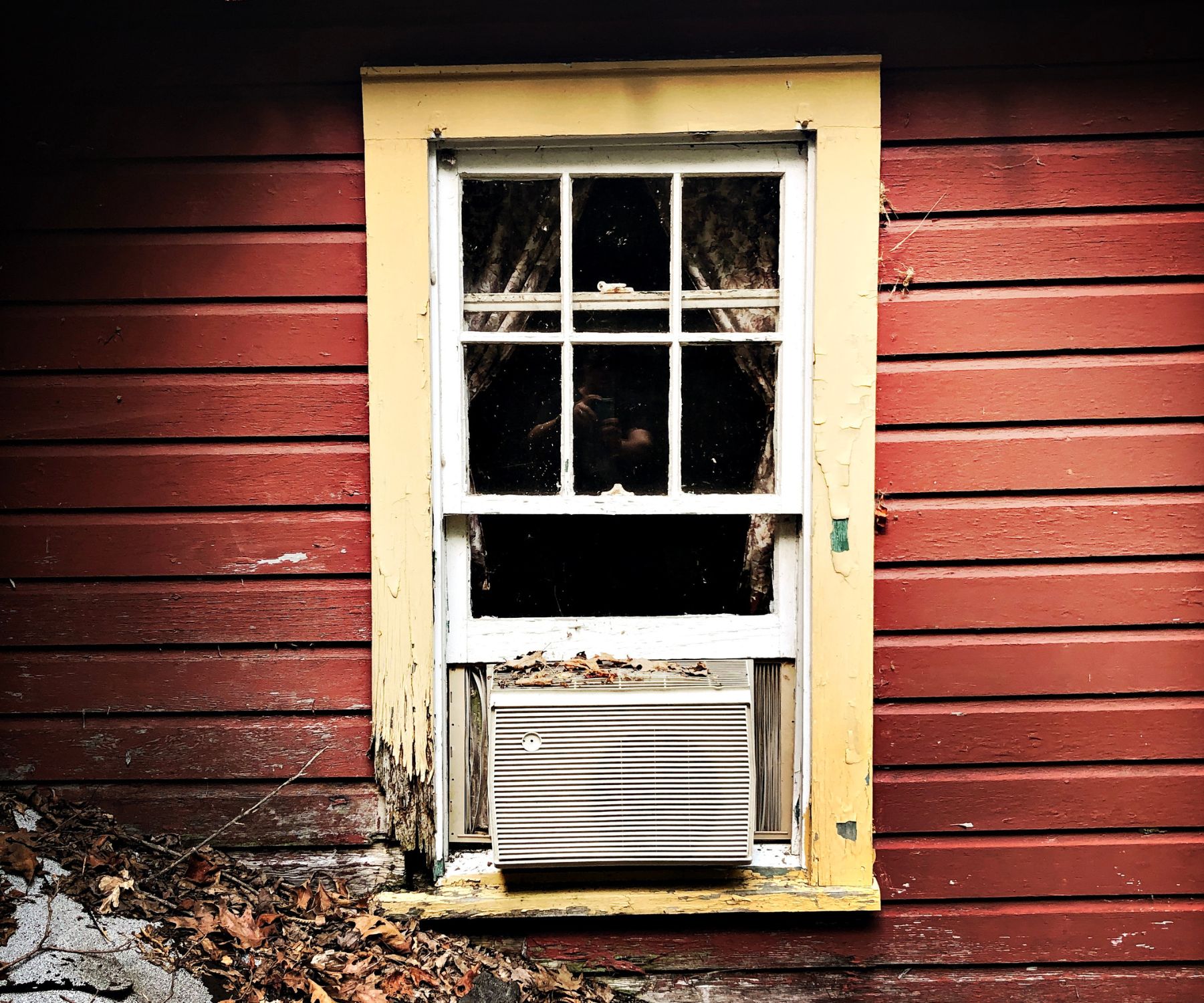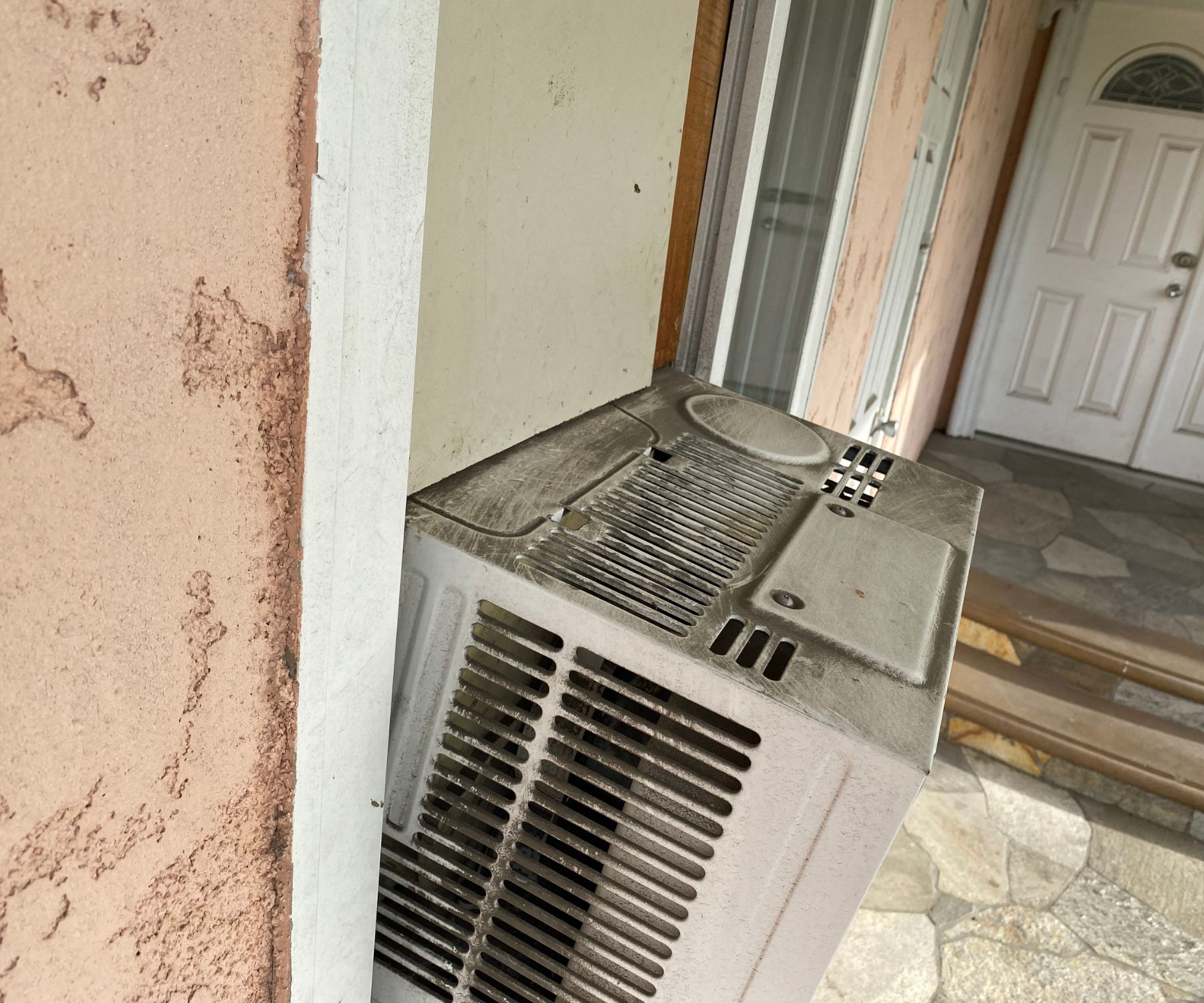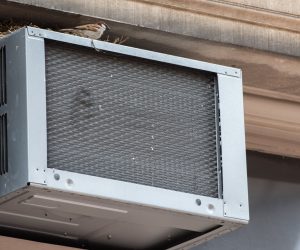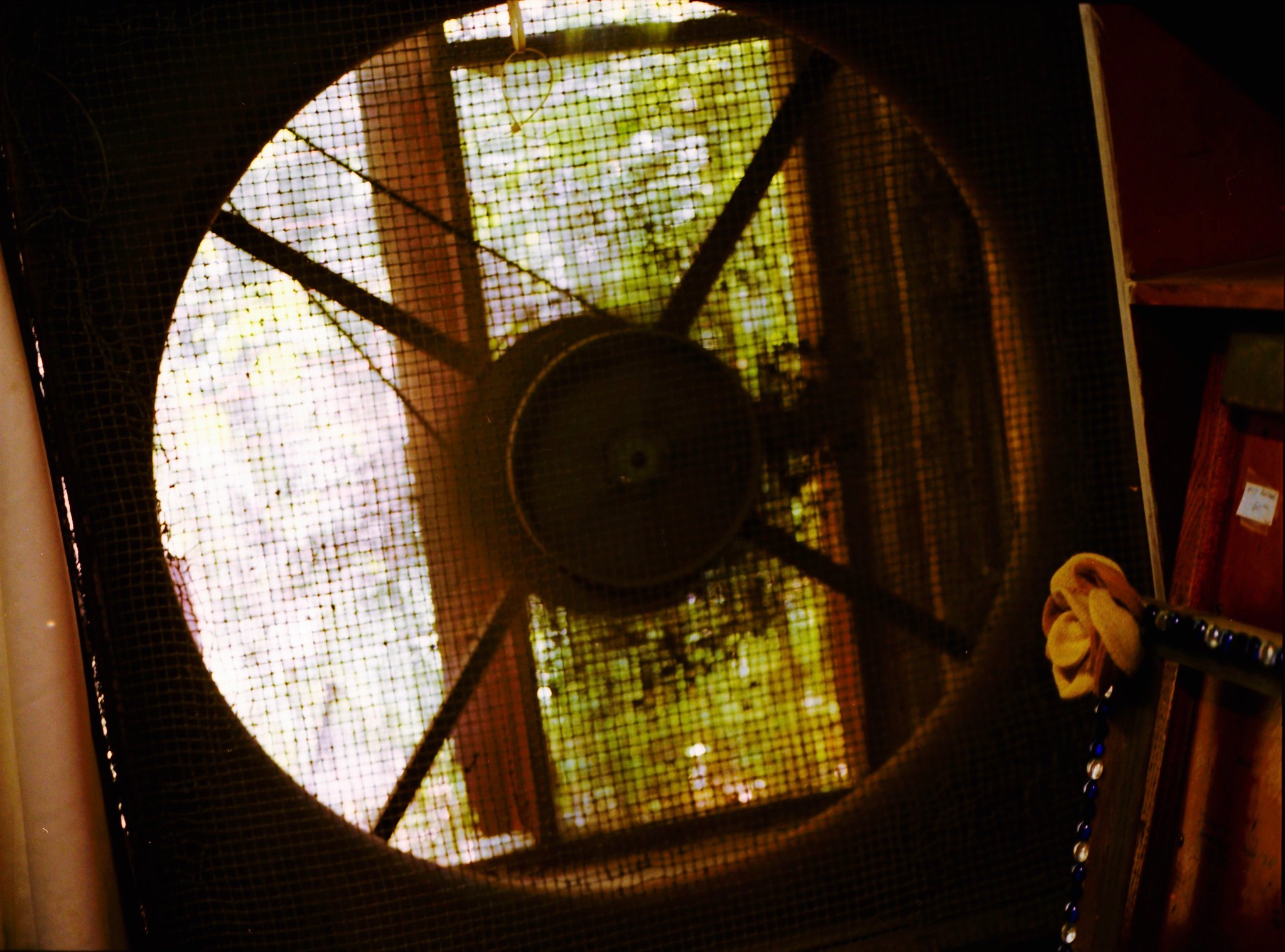Mold growth happens where there is a lack of light and lot of moisture and nutrients to feed it. Most mold strains are common to leaves and grass and more specifically the soil that is feeding the grass.
Table of Contents
So how does mold get on the Styrofoam in the air conditioner?
1. The Styrofoam is dirty.
2. There is standing water inside the air conditioner.
Styrofoam is one of the most unlikely places for mold to grow. The reason is it has absolutely no ability to absorb moisture and it has zero nutrients.
But given the right circumstances even Styrofoam can have mold growing on it.

MIDEA EasyCool. Air Conditioner, Dehumidifier, and Fan.12,000 BTU, Rooms up to 550 Sq. Ft. Learn More Here
1.It is dirty.
If there is mold growing on the Styrofoam inside of your window air conditioner, it is most likely because the Styrofoam is dirty and there is either rain or humidity droplets supplying moisture to it. All inside a dark humid space.
The outside of the window air conditioner is in fact outside in the elements.
Overtime dirt is going to get into the machine and get on the Styrofoam.
Combine the nutrients of the dirt with the humidity and darkness inside of the housing of the air conditioner and you have the ingredients of mold production.
2. There is standing water inside of the air conditioner.
All household molds have one thing in common, they all thrive in standing contaminated water.
Condensation from the cooling coils inside of the air conditioner is meant to drip freely to the outside of the machine so as the inside of the machine stays dry.
If the inside of the machine is unnaturally filled with debris, the drip hole could be clogged to the point where there is standing water inside of the air conditioner.
This could explain why there is a continuing water supply for the Styrofoam.
Again creating the essentials for mold production which are nutrients, moisture and darkness.
Unlevel AC
Another reason why there may be standing water is that the Window air conditioner is not level and condensation water is able to gather to the lower side of the unleveled unit. Its important to note that not all Window ACs are meant to be level. Some require a slight tilt for the condensation water to drain towards the drainage hole. Check your manual for for your specific info.

TOSOT 8,000 BTU Portable Air Conditioner Quiet, Remote
Control, Built-in Dehumidifier, Fan – Cool Rooms Up to 300 Square Feet. See a Picture of it Here
Where is the air conditioner located?
If the inside of the air conditioner has mold and you’ve already determined that the recipe for mold is nutrients, moisture, and darkness, then the question is , how is the source of nutrients getting inside of the machine?
 Some of the possibilities include that it is located under a tree, or it is in an area like a wind tunnel where dirt is easily kicked up and can get into the machine.
Some of the possibilities include that it is located under a tree, or it is in an area like a wind tunnel where dirt is easily kicked up and can get into the machine.
There are many reasons why an air conditioner can be exposed to extra dirt and debris. Also if the air conditioner has been recently brought in from storage, the likelihood of it being dusty inside is more than a little high.
Storage areas have a tendency to be humid, whether it be the Attic, the basement, or a storage building outside, they almost always seem to be moist.
Again you have all the components necessary for the production of mold in one spot. Humidity, dust, and no light. Taking apart your air conditioner when you bring it out of storage is a great time to examine it and make sure that there is no debris inside the block the drainage hole and to clean off any dirt and dust on the Styrofoam.
But regardless of whether you’re taking it out of storage or not, it is time to take apart the air conditioner and completely clean out any mold, debris, and dirt.
Another additional tip at this juncture is to add a mold inhibitor.
A mold inhibitor is a specific product that is manufactured to add to livestock feed. It keeps mold from being able to grow in their food.
It is also sold as a spray or solution to keep decks from mold growth.
While your air conditioner is taken apart for cleaning and maintenance, spraying a mold inhibitor on the Styrofoam as well as the other components inside the machine before you reassemble it is a great way to help ensure that your air conditioner and more importantly your air is free of mold and mold spores.

Della 6000 Smart Window AC. 250 square ft. See it Here.
Black Mold In Air Conditioner
Dealing with black mold on Styrofoam within an air conditioning unit is a concern that requires careful attention, primarily due to the potential health risks associated with certain types of mold, such as Stachybotrys, commonly referred to as “black mold.” This particular mold is notorious for its toxic properties and the potential health risks it poses when its spores are inhaled. I
t thrives in moist, damp environments, which can easily occur within the components of an air conditioner, especially if there’s stagnant water or excessive moisture.
Here’s a more detailed guide on how to address this issue:
Understanding the Environment for Mold Growth
- Moisture Source: Black mold needs a constant moisture source to grow. In air conditioners, this can be due to standing water or high humidity levels within the unit.
- Material: Styrofoam within air conditioning units can easily retain moisture, providing an ideal environment for mold growth.
Health Risks
- Toxicity: Certain molds that appear black can be particularly harmful. Stachybotrys chartarum is one such mold known for producing toxins that can be dangerous when inhaled.
- Symptoms: Exposure to toxic molds can lead to various health issues, including respiratory problems, headaches, fatigue, and in severe cases, neurological damage.
Safe Cleaning Guidelines
- Preparation: Wear protective gear such as gloves, N95 masks, or respirators, and eye protection to prevent direct contact with mold and inhalation of spores.
- Cleaning Solution: Use a mixture of water and mild detergent, or a solution specifically designed for mold removal. For non-porous surfaces, diluted bleach (1 cup of bleach in 1 gallon of water) can be effective, but it should be used with caution due to its corrosive nature.
- Cleaning Process: Gently clean the affected Styrofoam areas to avoid breaking it and releasing more spores into the air. Avoid using excessive water, which can exacerbate the moisture problem.
- Drying: Ensure the cleaned area is thoroughly dried to prevent mold from returning. Increased ventilation, the use of dehumidifiers, or air movers can accelerate the drying process.
- Professional Help: If the mold infestation is extensive or if you’re unsure about handling it yourself, consider hiring a professional mold remediation service.
Preventive Measures
- Regular Maintenance: Regularly inspect and maintain your air conditioning unit to prevent water buildup and ensure proper drainage.
- Humidity Control: Use dehumidifiers or ensure adequate ventilation in areas prone to high humidity to keep moisture levels in check.
- Prompt Repairs: Address leaks and water damage promptly to prevent the conditions that foster mold growth.
By understanding the conditions that lead to mold growth and following safe cleaning practices, you can effectively address mold issues in your air conditioner while minimizing health risks. If ever in doubt, don’t hesitate to consult with a professional to ensure the safety and well-being of your household.
Summary
Even though Styrofoam is a material that does not facilitate the growth of mold easily. Any material given the right circumstances can develop mold growth.
If there is mold on the Styrofoam in your air conditioner, then more than likely the Styrofoam is dirty.
Mold needs nutrients, and without there being something like dirt on the Styrofoam, there is no way that mold could grow on Styrofoam.
Mold also needs moisture, if there is something blocking the exit of the moisture inside the air conditioner, like mud or leaves, then you have all the components of mould and the perfect environment for it to grow in.
In order to find out if you have these issues, you may have to take apart your air conditioner to clean and maintain it.
Taking apart and cleaning an air conditioner is a very easy thing to do and there are plenty of tutorials and YouTube videos available to take you through the process.
But before you put the air conditioner back together and reinstall it, it is the perfect time to consider spraying a mold inhibitor on the Styrofoam and all the other components inside of the air conditioner.








